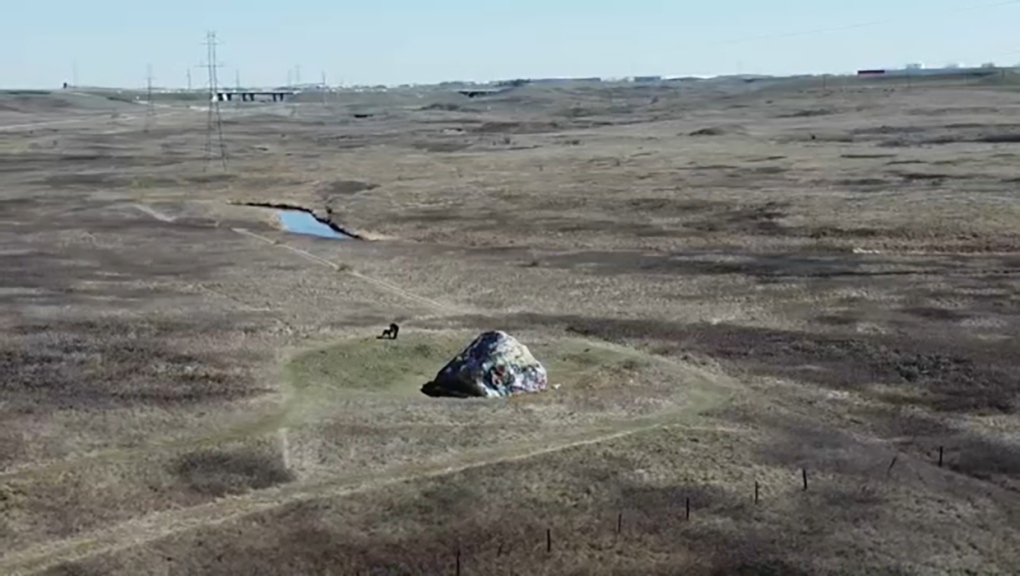Achi news desk-
The quartzite boulder spent untold thousands of years riding a massive glacier all the way from the Tonquin Jaspers Valley to its eventual resting place next to Nose Creek.
That was between 15 and 20,000 years ago. Sometime later, the first people walked past – and from memory long ago Beddington’s errant and dozens of others like it – became significant landmarks across the landscape.
It is not clear just when, but the first people began to leave their mark – paintings telling stories or marking nearby events, people or resources.
“All these sacred places were all marked – even the medicine wheels and the way they point – they point to a direction where something else happened,” said Many Heads’ Grant. , educator at Blackfoot Crossing Historical Park on Siksika.
Many Heads notes that the site was literally just steps from what is now known as the Old Northern Trail, a route that shadowed the Rocky Mountains from Alaska to Mexico. It was a major trade and travel route, a long line that connected the northern people of the boreal forest, through the Great Plains, to the canyon and desert country to the south.
“They’re not just records – they’re sacred,” said Many Heads. “It’s very sad that people come to these places and destroy them.”
GRAFFITI
That is what has happened to the substantial boulder over the years – photos from the 1943 Alberta Geological Report show the boulder intact. As of 2000, a report on the protection of similar faults identified seven with known pictographs, including the Beddington site, located a few hundred meters north of Country Hills Boulevard and a similar distance west of Deerfoot Trail.
At the time there was no mention of graffiti, but notes from the archaeological site known as EgPm-177 read “The pictographs have faded and there is no record of their exact location or form.”
Today the rock is covered with countless layers of paint, with fresh cans on the ground as of April 22, 2024. Four and a half meters high and about 7.3 meters long and wide, a bit of the actual rock which is visible.
Today the rock is covered with countless layers of paint, with fresh cans laying on the ground from April 22, 2024. Four and a half meters high and about 7.3 meters long and wide, a little of the actual rock that is visible.
CONSERVATION
Nose Creek Preservation Society founder Andrew Yule says more needs to be done to protect the irregular and give it a place of respect and context in Calgary’s modern landscape.
“Finland has laws to protect natural monuments like glacial erratics and we don’t really have protections,” Yule said. “We really need efforts from all levels of government to make sure that there are significant natural monuments [. . .] in this way are protected.”
The city owns the land immediately to the south – an unofficial park with a bridge and gravel path, but no proper access point. The irregular itself stands about 60 meters on private land to the north.
The city says there is little, if anything, it can do.
Yule said his group has tried to find the owner of the land to see if they can negotiate a plan for the ancient site, but they have not been successful.
“We have teams of people who are interested in helping restore it so we can remove the graffiti and put up real historical markers that can tell the story so it’s not just another rock,” Yule said.
The petroglyphs were mainly painted using a naturally occurring red clay called ocher, mixed with animal fat. It has lasted at least 1,500 years in some North American sites, but it deteriorates over time and with constant touches. The presence of even the lightest coat of spray paint can cause irreparable damage.
Yule says the valley is the final resting place of countless bison, butchered and packed to feed the people who followed the herds of the north over vast areas for thousands of years.
 Nose Creek Preservation Society founder Andrew Yule says more needs to be done to protect the irregular and give it a place of respect and context in Calgary’s modern landscape.
Nose Creek Preservation Society founder Andrew Yule says more needs to be done to protect the irregular and give it a place of respect and context in Calgary’s modern landscape.
There is still a depression around the irregular Beddington, broken out by the feet of the great bison herds rubbing their winter coats.
Today, that ditch is the only tangible evidence left of the countless souls who passed this way since the great glaciers melted away and began life in Alberta.

